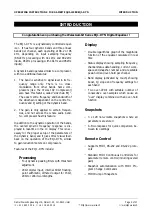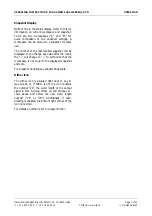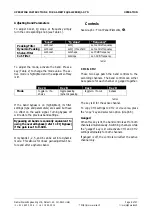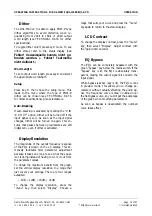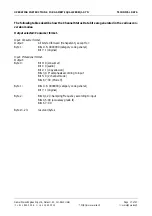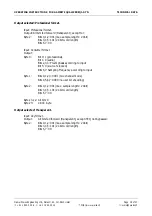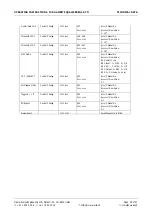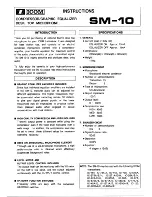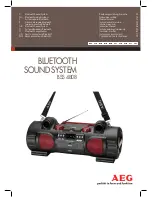
OPERATING INSTRUCTIONS FOR GAMBIT EQUALIZER EQ1-DYN
OPERATION
Daniel Weiss Engineering Ltd., Florastr. 42, CH-8610 Uster
Page 10 of 27
)
+41 1 940 20 06
2
+41 1 940 22 14
8
http://www.weiss.ch
*
weiss@weiss.ch
Dynamic
If a dynamic peaking-filter has been selected,
pressing the “dynamic” key will toggle the Q-
controller of the peaking band between Q- and
Threshold-adjustment (this can also be seen in the
band display, where either the Q or the threshold
value is shown).
How to set a dynamic band
A good way to start off is by taking some material,
and setting the EQ1-DYN so as to correct or
pronounce all the bands which you feel need
processing. Do the adjustments in normal peaking
mode, not in dynamic peaking mode. Set every-
thing so you get the feeling that this improves the
“sound” of the material.
Now take any band and set it to dynamic peaking
mode by pressing key B. Adjust the threshold of
the band until you see movement in the frequency
response window of the EQ1-DYN
(the thresh-
old setting is important for the function of the
dynamic EQ, very much like for a compressor).
This is a good starting point for experiments!
We give two examples for dynamic band usage:
Correcting musical instrument volume imbalances
EQing is the process of changing the spectral
balance of any audio programme. By EQing, we
wish to, for example, attenuate or boost a certain
instrument within a complex piece of music.
It is clear from our hearing experiences that most
instruments overlap in their frequency ranges, so
trying to affect one certain instrument by EQ
without affecting others is usually impossible. This
especially becomes a problem if two instruments
in the same band are not in volume balance, i.e.
one is too loud and masks the other.
One remedy for this is to apply either some boost
or cut EQ in that band (either boost the soft in-
strument or attenuate the loud one). Except that
this process affects both instruments. However,
when using dynamic EQ, the boost is only applied
if the loud instrument pauses. On the other hand,
one can apply some dynamic attenuation when-
ever the loud instrument plays. The dynamic filter
will adjust itself to correct volume imbalances
between the two instruments.
De-Essing
“Ess”-sounds usually occur on, but are not limited
to, recordings with human vocals. They are the
product of over-compression (common on TV or
radio recordings), or similar effects, like satura-
tion of magnetic mediums.
These sounds are characterised by an exagger-
ated hiss or “s”-pronunciation (hence the name).
They are mostly concentrated in the band be-
tween 1kHz - 10kHz.. Just applying attenuation by
EQ in this band will render the recording dull and
muffled. High frequency content is very important
for hearing enjoyment, so simply attenuating will
reduce programme quality. By applying dynamic
cut EQ, the “ess”-sounds can be reduced, without
affecting low-level high-frequency content, im-
proving the quality.





